| Weight | 1 lbs |
|---|---|
| Dimensions | 9 × 5 × 2 in |
| host | rabbit |
| isotype | IgG |
| clonality | monoclonal |
| concentration | 1 mg/mL |
| applications | ICC/IF, IHC, WB |
| available sizes | 100 µg |
rabbit anti-Calreticulin monoclonal antibody 9015
$409.00
Antibody summary
- Rabbit monoclonal to Calreticulin
- Suitable for: WB, ICC/IF, IHC
- Reacts with: human, mouse, rat
- Isotype: IgG
- 100 µg
rabbit anti-Calreticulin monoclonal antibody 9015
| antibody |
|---|
| Database link: human P27797 mouse P14211 rat P18418 |
| Tested applications WB,IHC,IHC,ICC/IF |
| Recommended dilutions WB: 1:1000-1:2000 IF/ICC and IHC: 1:1000 |
| Immunogen Synthetic peptides VESGSLEDDWDFLPPKKI corresponding to amino acids 191-208 of human calreticulin, including the LC3 interacting region or LIR. |
| Size and concentration 100µg and 1 mg/mL |
| Form liquid |
| Storage Instructions 2-8°C for short term, for longer term at -20°C. Avoid freeze / thaw cycles. |
| Storage buffer PBS, 50% glycerol, 0.04% NaN3 |
| Purity affinity purified |
| Clonality polyclonal |
| Isotype IgG |
| Compatible secondaries goat anti-rabbit IgG, H&L chain specific, peroxidase conjugated, conjugated polyclonal antibody 9512 goat anti-rabbit IgG, H&L chain specific, biotin conjugated polyclonal antibody 2079 goat anti-rabbit IgG, H&L chain specific, FITC conjugated polyclonal antibody 7863 goat anti-rabbit IgG, H&L chain specific, Cross Absorbed polyclonal antibody 2371 goat anti-rabbit IgG, H&L chain specific, biotin conjugated polyclonal antibody, crossabsorbed 1715 goat anti-rabbit IgG, H&L chain specific, FITC conjugated polyclonal antibody, crossabsorbed 1720 |
| Isotype control Rabbit polyclonal IgG - Isotype Control |
| target relevance |
|---|
| Calreticulin, an abundant protein found in the endoplasmic reticulum (ER), serves both as an essential organelle marker and a cell marker. Within the ER, calreticulin plays a critical role in calcium homeostasis and protein folding, ensuring proper maturation and quality control of newly synthesized proteins. Its presence and function in the ER make calreticulin a valuable organelle marker, aiding in the identification and localization of this dynamic and essential cellular compartment. Additionally, calreticulin has emerged as a prominent cell marker due to its distinct expression patterns in various cell types and physiological conditions. By detecting and measuring the levels of calreticulin on the cell surface, researchers can identify and isolate specific cell populations, such as stem cells or cancer cells. The ability to use calreticulin as both an organelle and cell marker offers valuable insights into cellular processes and opens up new avenues for studying cell biology, disease mechanisms, and developing targeted therapies. Click for more on: cell markers and Calreticulin |
| Protein names Calreticulin (CRP55) (Calregulin) (Endoplasmic reticulum resident protein 60) (ERp60) (HACBP) (grp60) |
| Gene names CALR,CALR CRTC |
| Protein family Calreticulin family |
| Mass 48142Da |
| Function FUNCTION: Calcium-binding chaperone that promotes folding, oligomeric assembly and quality control in the endoplasmic reticulum (ER) via the calreticulin/calnexin cycle. This lectin interacts transiently with almost all of the monoglucosylated glycoproteins that are synthesized in the ER (PubMed:7876246). Interacts with the DNA-binding domain of NR3C1 and mediates its nuclear export (PubMed:11149926). Involved in maternal gene expression regulation. May participate in oocyte maturation via the regulation of calcium homeostasis (By similarity). Present in the cortical granules of non-activated oocytes, is exocytosed during the cortical reaction in response to oocyte activation and might participate in the block to polyspermy (By similarity). {ECO:0000250|UniProtKB:P28491, ECO:0000250|UniProtKB:Q8K3H7, ECO:0000269|PubMed:11149926, ECO:0000269|PubMed:7876246}. |
| Subellular location SUBCELLULAR LOCATION: Endoplasmic reticulum lumen {ECO:0000269|PubMed:10358038, ECO:0000269|PubMed:11149926}. Cytoplasm, cytosol {ECO:0000269|PubMed:11149926}. Secreted, extracellular space, extracellular matrix {ECO:0000305}. Cell surface {ECO:0000269|PubMed:10358038}. Sarcoplasmic reticulum lumen {ECO:0000250|UniProtKB:P28491}. Cytoplasmic vesicle, secretory vesicle, Cortical granule {ECO:0000250|UniProtKB:Q8K3H7}. Cytolytic granule {ECO:0000269|PubMed:8418194}. Note=Also found in cell surface (T cells), cytosol and extracellular matrix (PubMed:10358038). During oocyte maturation and after parthenogenetic activation accumulates in cortical granules. In pronuclear and early cleaved embryos localizes weakly to cytoplasm around nucleus and more strongly in the region near the cortex (By similarity). In cortical granules of non-activated oocytes, is exocytosed during the cortical reaction in response to oocyte activation (By similarity). {ECO:0000250|UniProtKB:P28491, ECO:0000250|UniProtKB:Q8K3H7, ECO:0000269|PubMed:8418194}. |
| Structure SUBUNIT: Monomer. Component of an EIF2 complex at least composed of CELF1/CUGBP1, CALR, CALR3, EIF2S1, EIF2S2, HSP90B1 and HSPA5. Interacts with PDIA3/ERp57 and SPACA9 (By similarity). Interacts with TRIM21 (PubMed:8666824). Interacts with NR3C1 (PubMed:11149926). Interacts with PPIB (PubMed:20801878). Interacts (via P-domain) with PDIA5 (PubMed:23614004). Interacts with GABARAP (PubMed:19154346). Interacts with HLA-E-B2M and HLA-G-B2M complexes (PubMed:9427624, PubMed:9640257). Interacts with HLA-F (PubMed:10605026). Interacts with CLCC1 (PubMed:30157172). {ECO:0000250|UniProtKB:P14211, ECO:0000250|UniProtKB:P18418, ECO:0000269|PubMed:10605026, ECO:0000269|PubMed:11149926, ECO:0000269|PubMed:19154346, ECO:0000269|PubMed:20801878, ECO:0000269|PubMed:23614004, ECO:0000269|PubMed:30157172, ECO:0000269|PubMed:8666824, ECO:0000269|PubMed:9427624, ECO:0000269|PubMed:9640257}. |
| Domain DOMAIN: Can be divided into a N-terminal globular domain, a proline-rich P-domain forming an elongated arm-like structure and a C-terminal acidic domain. The P-domain binds one molecule of calcium with high affinity, whereas the acidic C-domain binds multiple calcium ions with low affinity.; DOMAIN: The interaction with glycans occurs through a binding site in the globular lectin domain.; DOMAIN: The zinc binding sites are localized to the N-domain.; DOMAIN: Associates with PDIA3 through the tip of the extended arm formed by the P-domain. |
| Involvement in disease DISEASE: Note=CALR somatic mutations are frequently found in myeloproliferative neoplasms lacking JAK2 or MPL mutations. Myeloproliferative neoplasms are chronic myeloid cancers characterized by overproduction of mature blood cells, and may evolve into acute myeloid leukemia. In addition to chronic myeloid leukemia with the BCR-ABL fusion gene, the three most common myeloproliferative neoplasms are essential thrombocythemia, polycythemia vera, and myelofibrosis. {ECO:0000269|PubMed:24325356, ECO:0000269|PubMed:24325359}. |
| Target Relevance information above includes information from UniProt accession: P27797 |
| The UniProt Consortium |
Publications
| pmid | title | authors | citation |
|---|---|---|---|
| We haven't added any publications to our database yet. | |||
Protocols
| relevant to this product |
|---|
| Western blot IHC ICC |
Documents
| # | SDS | Certificate | |
|---|---|---|---|
| Please enter your product and batch number here to retrieve product datasheet, SDS, and QC information. | |||
Only logged in customers who have purchased this product may leave a review.
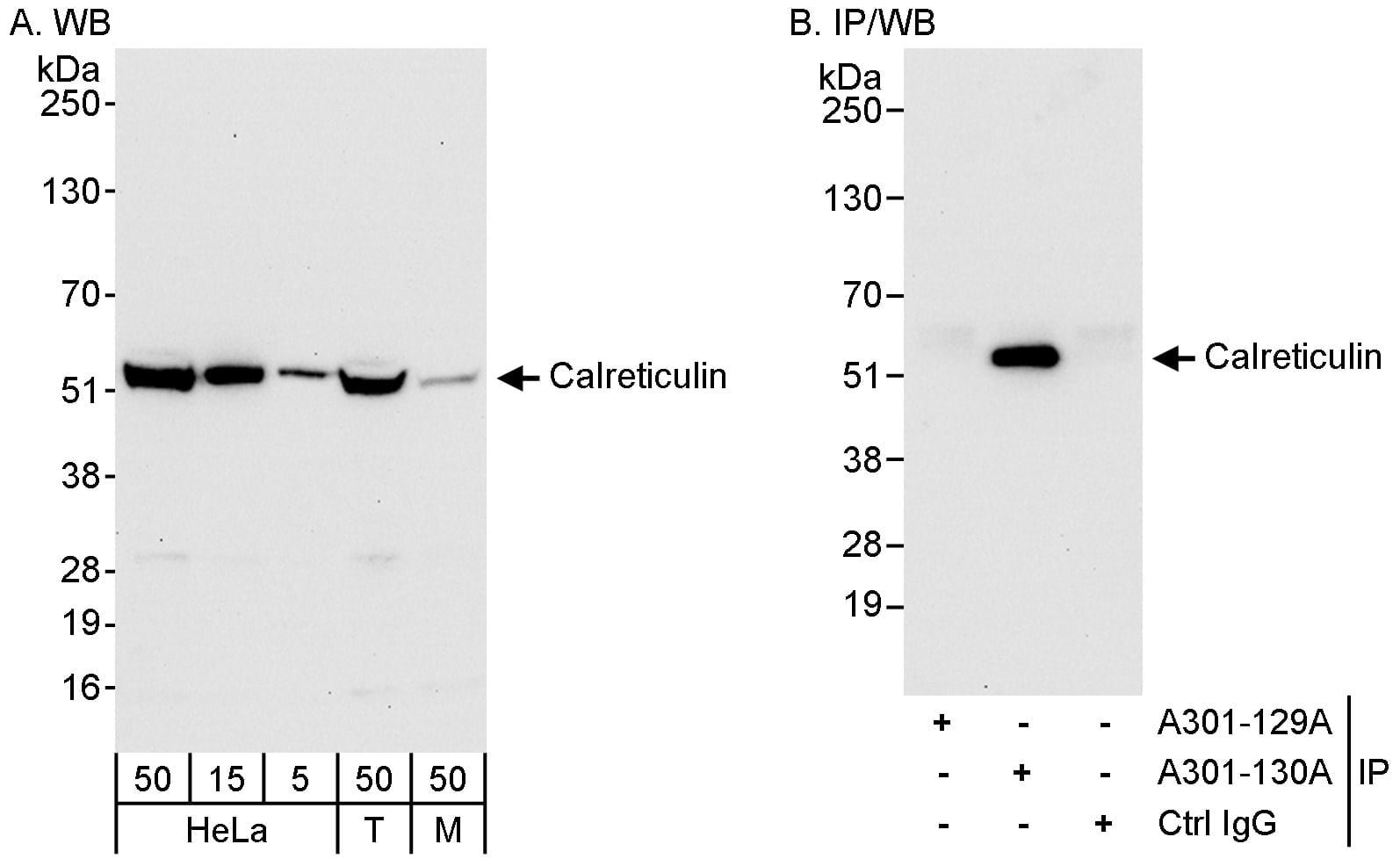

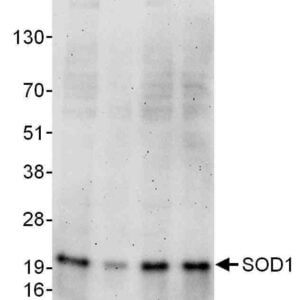
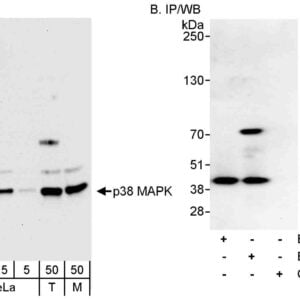
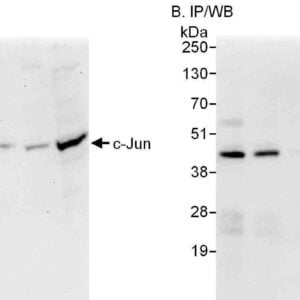
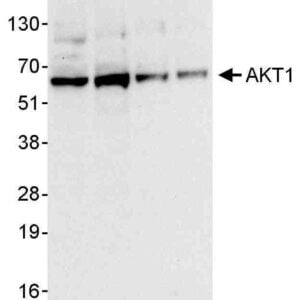

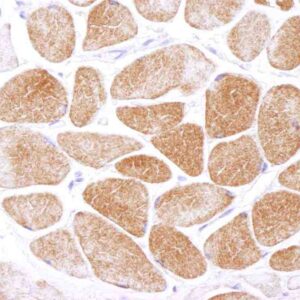
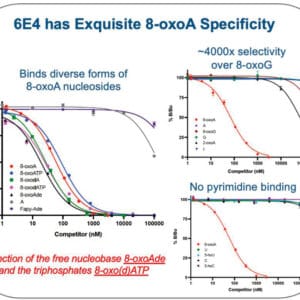

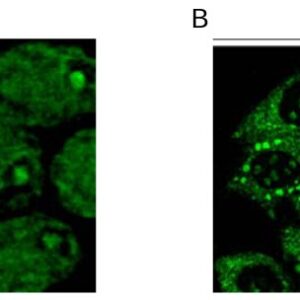
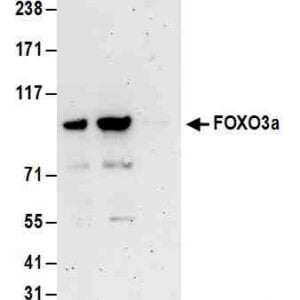
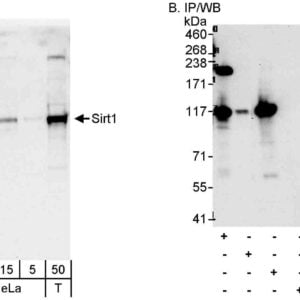
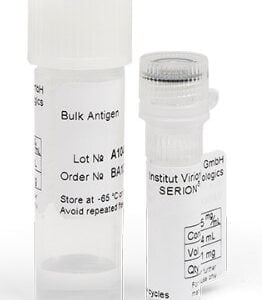
Reviews
There are no reviews yet.